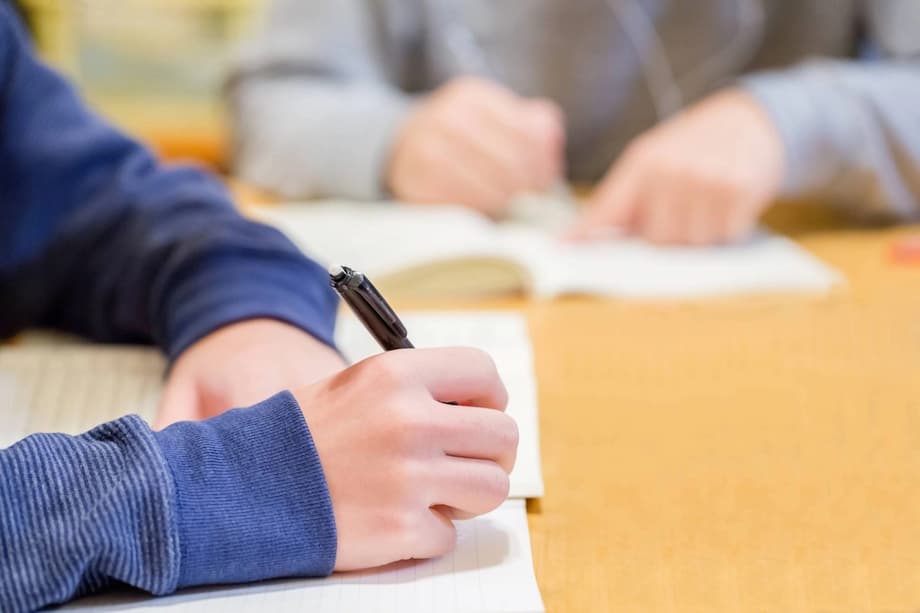Japanese Students Face New Challenges in the 2025 National Achievement Test
Japan’s 2025 National Achievement Test has revealed a concerning trend: students, especially junior high schoolers, are struggling with description-type questions that require them to express their thoughts clearly in writing. The Ministry of Education’s latest data shows that the average correct answer rate for these questions in the Japanese-language section was just 25.6% among third-year junior high students. This result has sparked a national conversation about the state of Japanese education, gender gaps in learning, and the broader implications for the country’s future workforce and society.
- Japanese Students Face New Challenges in the 2025 National Achievement Test
- What Are Description-Type Questions and Why Do They Matter?
- Key Findings from the 2025 National Achievement Test
- Why Are Description-Type Questions So Difficult for Japanese Students?
- Comparing Japan’s Performance Internationally
- Historical Context and Evolution of the National Achievement Test
- Gender Gaps and Unconscious Bias in Japanese Education
- Broader Implications: What Do These Results Mean for Japan’s Future?
- In Summary
What Are Description-Type Questions and Why Do They Matter?
Description-type questions, sometimes called open-ended or constructed-response questions, require students to write out their answers in sentences or paragraphs. Unlike multiple-choice or short-answer questions, these items test a student’s ability to organize thoughts, reason logically, and communicate ideas effectively to others. In the context of the Japanese-language section, students are often asked to interpret texts, reflect on their meaning, and articulate their own opinions or analyses in writing.
Such skills are increasingly important in the modern world, where communication, critical thinking, and the ability to explain complex ideas are valued in both higher education and the workplace. The low performance on these questions suggests that many students may not be developing these essential competencies to the desired level.
Key Findings from the 2025 National Achievement Test
The 2025 test, conducted in April, involved about 1.9 million students from approximately 28,000 schools across Japan. The results, released by the Ministry of Education, Culture, Sports, Science, and Technology (MEXT), provide a detailed snapshot of student achievement in Japanese language, mathematics, and science for both sixth-grade elementary and third-year junior high students.
Here are some of the most notable findings:
- Japanese Language: The average correct answer rate was 67.0% for elementary sixth graders and 54.6% for junior high third graders. However, for description-type questions among junior high students, the rate plummeted to just 25.6%.
- Mathematics: Correct answer rates were 58.2% for elementary students and 48.8% for junior high students, both showing declines from previous years.
- Science: Elementary students scored 57.3% on average, while junior high students’ science scores were calculated differently due to the introduction of computer-based testing, with an average score of 505 out of a base of 500 points.
These results indicate a downward trend in performance, particularly in Japanese and mathematics, compared to previous years. For example, the Japanese language score for junior high students dropped from 58.4% in 2024 to 54.6% in 2025, the lowest since the current question format was introduced in 2019.
Gender Differences: A Closer Look
For the first time, the ministry released test results by gender. The data revealed that female students in both elementary and junior high school outperformed their male counterparts in Japanese-language questions. More girls also reported that they liked, were good at, or understood Japanese well. However, in mathematics and science, while there were no significant gender gaps in correct answer rates, fewer girls than boys expressed interest or confidence in these subjects.
These tendencies mirror findings from the 2023 Trends in International Mathematics and Science Study (TIMSS), which showed that Japanese girls are less likely than boys to enjoy or feel competent in math and science, despite similar achievement levels. Experts suggest that unconscious gender bias and societal expectations may play a role in shaping these attitudes from an early age.
Why Are Description-Type Questions So Difficult for Japanese Students?
The sharp drop in correct answers for description-type questions has prompted educators and policymakers to ask why students are struggling. Several factors may be at play:
- Curriculum and Teaching Methods: Traditional Japanese education has often emphasized rote memorization and correct answers over open-ended discussion and personal expression. While reforms have aimed to foster more critical thinking and communication skills, the transition has been gradual.
- Assessment Culture: High-stakes entrance exams and standardized tests in Japan have historically focused on multiple-choice or short-answer formats, giving students less practice with extended writing tasks.
- Language Complexity: The Japanese language itself, with its complex writing systems and nuances, can make written expression particularly challenging, especially for students who are not regularly exposed to essay-style assignments.
- Societal Expectations: There is a cultural tendency in Japan to value harmony and avoid standing out, which may discourage students from expressing strong personal opinions or unique perspectives in writing.
According to a ministry official, “Students seemed to struggle especially with those [questions] asking them to write their thoughts in a way that others can understand.” This suggests that the issue is not just about language mechanics, but also about the ability to organize and communicate ideas effectively.
Comparing Japan’s Performance Internationally
Despite these challenges, Japanese students continue to perform well in international assessments. In the 2023 TIMSS, Japan’s elementary and junior high students ranked among the top five globally in both math and science. For example, Japanese fourth graders were fifth in math and sixth in science, while junior high students were fourth in math and third in science. Singapore, Taiwan, and South Korea also ranked highly.
However, the TIMSS results also highlighted a paradox: while Japanese students achieve high scores, fewer report enjoying or feeling confident in math and science compared to their international peers. Only 45% of Japanese junior high students said they usually did well in science, compared to an international average of 51%. Just 27% wanted a job using science, far below the 58% international average.
This suggests that while Japanese students are mastering content, they may not be developing the same level of engagement or self-efficacy as students in other countries. The struggles with description-type questions could be a symptom of this broader issue.
Historical Context and Evolution of the National Achievement Test
The national achievement test has been a fixture of Japanese education since 2007, designed to assess the academic skills of sixth-grade elementary and third-year junior high students. Initially, all public schools participated, but since 2010, only selected schools have been involved, with private schools participating voluntarily. The test covers Japanese language and arithmetic for elementary students, and Japanese and mathematics for junior high students, with science added every three years.
Historically, the test has been used to monitor educational standards, identify regional disparities, and inform policy decisions. Prefectures such as Akita, Fukui, and Ishikawa have consistently ranked highest, while Okinawa and several urban areas have lagged behind. Socioeconomic factors, family structure, and community characteristics have all been linked to regional differences in performance.
The Debate Over Standardized Testing in Japan
The role of the national achievement test has been the subject of ongoing debate. Supporters argue that it provides valuable data for improving schools and ensuring accountability. Critics warn that excessive focus on test results can lead to unhealthy competition, teaching to the test, and neglect of broader educational goals.
As one education expert noted, “There is no guarantee that increased competition and focus on test scores will benefit children’s development. The hope is that Japan avoids relying solely on short-term results.”
Japan’s experience mirrors global debates about standardized testing. International assessments like PISA (Program for International Student Assessment) and TIMSS have influenced education policy worldwide, promoting data-driven reforms but also raising concerns about narrowing curricula and student well-being.
Gender Gaps and Unconscious Bias in Japanese Education
The 2025 test results have reignited discussions about gender gaps in Japanese education, particularly in math and science. While girls perform as well as boys on standardized tests, they are less likely to express interest or confidence in these subjects. Surveys have found that a significant proportion of Japanese students believe that proficiency in certain subjects depends on gender, a perception reinforced by societal stereotypes and adult attitudes.
Organizations such as the Unconscious Bias Laboratory and the Yamada Shintaro D & I Foundation are working to address these issues by promoting gender-neutral education and supporting girls interested in STEM (science, technology, engineering, and mathematics) fields. Experts emphasize the importance of encouraging girls from an early age and challenging stereotypes that may limit their aspirations.
Broader Implications: What Do These Results Mean for Japan’s Future?
The struggles with description-type questions and the broader trends revealed by the 2025 National Achievement Test have significant implications for Japan’s education system and society. As the country faces demographic challenges, technological change, and global competition, the ability to think critically, communicate effectively, and adapt to new situations will be more important than ever.
Policymakers are already considering reforms to curriculum and assessment methods to better foster these skills. The introduction of computer-based testing, set to expand to all subjects by 2027, may provide more nuanced data and opportunities for innovative question formats. However, experts caution that changes in testing must be accompanied by shifts in teaching practices, classroom culture, and societal attitudes toward learning and achievement.
Japan’s experience also offers lessons for other countries grappling with similar issues. As one international education analyst put it, “Standardized assessments are essential for measuring progress and ensuring accountability, but they must be balanced with efforts to cultivate creativity, resilience, and a love of learning.”
In Summary
- Japanese students, especially junior high schoolers, struggled with description-type questions in the 2025 National Achievement Test, with an average correct answer rate of just 25.6%.
- Overall scores in Japanese language and mathematics declined compared to previous years, raising concerns about academic trends.
- Gender gaps persist: girls outperform boys in Japanese but are less confident in math and science, reflecting broader societal biases.
- Japan continues to rank highly in international assessments, but students report lower enjoyment and confidence in STEM subjects.
- The results highlight the need for educational reforms that go beyond rote learning to foster critical thinking, communication, and engagement.
- Ongoing debates about standardized testing emphasize the importance of balancing accountability with holistic education.




